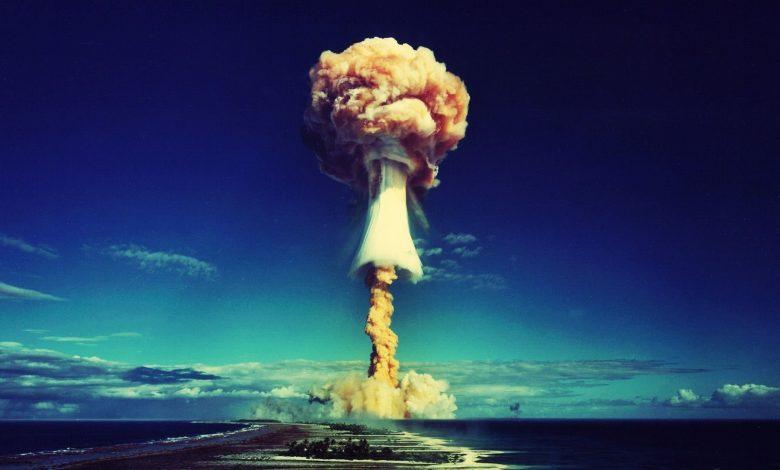
In the thrilling world of James Bond movies, the specter of nuclear threat has loomed large, captivating audiences for decades. From the suave secret agent’s daring escapades to the diabolical plots of villains seeking global domination, the portrayal of nuclear weapons has been a central theme that resonates with viewers worldwide. However, beyond the cinematic fantasy lies the reality of the atomic age and the legacy of individuals like Robert Oppenheimer, whose pivotal role in nuclear science shaped the course of history. This article delves into the enthralling portrayal of nuclear threat in James Bond movies, explores the ethical questions it raises, and examines how these films have influenced public perceptions of nuclear weapons. Moreover, it sheds light on the fascinating life of Robert Oppenheimer and his contributions to the development of nuclear weapons and the subsequent quest for disarmament.
NUCLEAR THREAT IN JAMES BOND MOVIES
In the action-packed world of James Bond movies, the concept of nuclear threat has been a recurring theme that captivates audiences worldwide. From iconic villains seeking world domination to heroic secret agents saving the day, the nuclear threat serves as a driving force behind many thrilling plotlines. However, this fictional portrayal of nuclear danger is rooted in real-world events and the legacy of individuals like Robert Oppenheimer, whose contributions to nuclear science continue to shape the world.
The Manhattan Project: Unveiling the Power of the Atomic Age
The Manhattan Project was a top-secret scientific endeavor undertaken during World War II by the United States, the United Kingdom, and Canada. Its primary objective was to develop the first atomic bombs, harnessing the power of nuclear fission. Led by brilliant minds like Robert Oppenheimer, the project brought together some of the world’s most brilliant scientists to work in secret laboratories, including the famous Los Alamos National Laboratory. The successful culmination of the Manhattan Project resulted in the creation of the first nuclear weapons, which were subsequently used in the bombings of Hiroshima and Nagasaki, marking the beginning of the atomic age. While it played a pivotal role in ending the war, the project also ignited profound ethical debates about the use of nuclear weapons and the potential for global devastation. The Manhattan Project remains a landmark achievement in human history, forever altering the course of warfare and shaping the world’s approach to nuclear technology and arms control.
Robert Oppenheimer: A Glimpse into the Man behind the Myth
Before delving into the nuclear threat in James Bond movies, it is essential to understand the man who played a significant role in shaping the actual nuclear landscape. Robert Oppenheimer, an American physicist, is often referred to as the “father of the atomic bomb.” He led the Manhattan Project during World War II, which ultimately resulted in the successful development of the first nuclear weapons. His brilliance in scientific research, combined with his complex personality, made him an enigmatic figure.
Oppenheimer’s contributions were not only confined to scientific achievements but also extended to the ethical implications of nuclear weapons. He later became a vocal advocate for international control and peaceful use of atomic energy. Despite his noble intentions, the world had already witnessed the destructive power of nuclear weapons, setting the stage for their portrayal in popular culture, including the James Bond franchise.
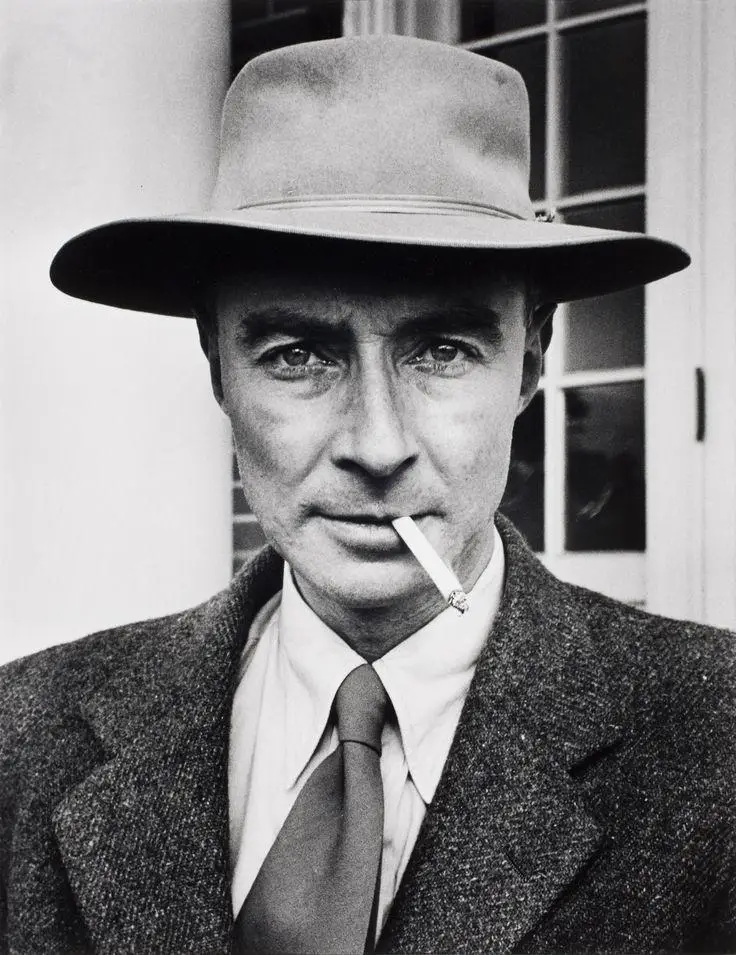
Trinity: The Dawn of the Atomic Age
The first atomic bomb was named “Trinity” after the test site where it was detonated. The Trinity test was the code name for the first detonation of a nuclear device and took place on July 16, 1945, during World War II. The test site was located in the Jornada del Muerto desert in New Mexico, United States.
The name “Trinity” was chosen by J. Robert Oppenheimer, the scientific director of the Manhattan Project, which was the top-secret U.S. government research program tasked with developing the atomic bomb. Oppenheimer, along with other scientists, engineers, and military personnel, worked tirelessly to harness the power of the atom.
The choice of the name “Trinity” held deep significance. It was a reference to the poetry of John Donne, a 17th-century English poet, specifically to his poem “Holy Sonnet XIV,” which includes the line: “Batter my heart, three-personed God.” This line speaks of a profound transformation and surrender, which paralleled the profound implications of harnessing atomic energy.
Beyond the poetic reference, the name “Trinity” also signified the pivotal moment in history when humanity unlocked the secrets of the atom and entered the nuclear age. It marked the culmination of years of intensive research and development, a turning point that would forever alter the course of warfare and geopolitics.
The successful Trinity test was a critical milestone in the development of nuclear weapons. The detonation of the bomb, with its blinding flash and earth-shattering shockwave, confirmed the fearsome power that had been unleashed. The scientists involved in the project famously had debates about whether the test might ignite Earth’s atmosphere, a risk they deemed small but not negligible.
Following the Trinity test, the world held its breath as the United States decided to deploy atomic bombs against Japan. The bombings of Hiroshima and Nagasaki in August 1945 brought an end to World War II but also ushered in a new era of uncertainty, fear, and nuclear proliferation.
Trinity remains a symbol of both scientific achievement and the ethical dilemmas associated with nuclear weapons. It stands as a stark reminder of the awesome and potentially destructive power that humans possess and continues to shape discussions on the responsible use of nuclear technology.
In the years that followed, the lessons of Trinity became instrumental in guiding the international community’s efforts to prevent nuclear arms race and achieve arms control and disarmament agreements. The name “Trinity” will forever evoke the awe and terror of the atomic age and serve as a reminder of humanity’s responsibility to wield science and technology for the greater good.
James Bond: A Hero in the Face of Nuclear Danger
The James Bond film series, based on Ian Fleming’s novels, debuted in 1962 with “Dr. No,” and quickly became a global phenomenon. The suave and sophisticated British secret agent, James Bond, played by various actors over the years, often finds himself in a race against time to prevent villains from using nuclear weapons for nefarious purposes.
The films ingeniously blend espionage, action, and romance while leveraging the nuclear threat as a central plot device. Whether it’s disarming a nuclear bomb seconds before detonation or thwarting a villain’s plot to provoke a nuclear war, James Bond’s character consistently faces high-stakes nuclear scenarios.
Nuclear Threat: A Pervasive Theme in Bond Movies
The nuclear threat serves as a recurring motif throughout the James Bond filmography. Several movies prominently feature nuclear-related plots, showcasing the fear and fascination with atomic power that gripped the world during the Cold War and beyond. Some of the most notable James Bond movies with nuclear themes include:
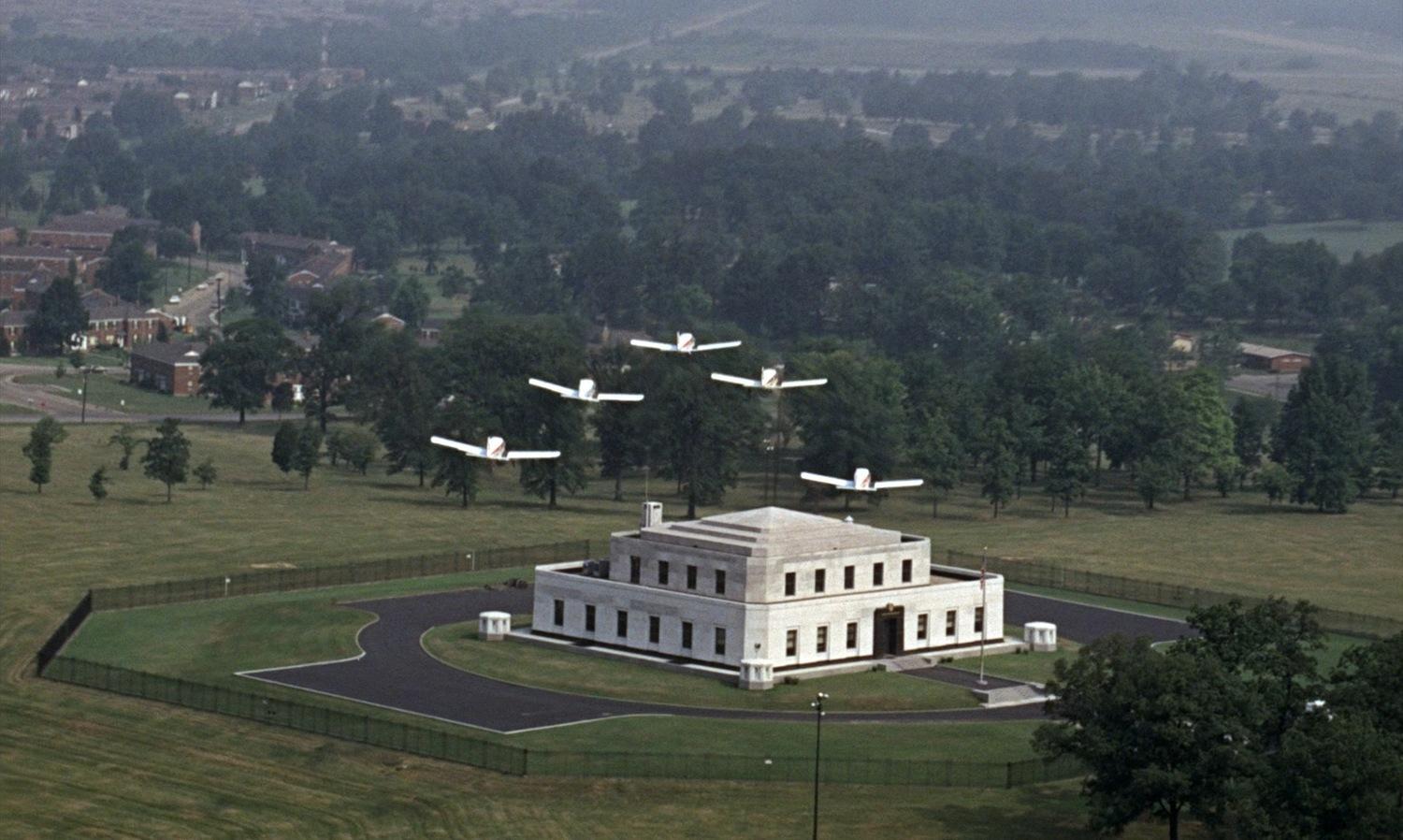
- “Goldfinger” (1964): In this classic film, Auric Goldfinger plans to detonate a nuclear bomb inside Fort Knox to increase the value of his gold reserves. Bond must stop him before it’s too late.
- “Thunderball” (1965): The criminal organization SPECTRE hijacks two nuclear warheads and demands a ransom, putting the world at risk of a nuclear catastrophe. Bond’s mission is to recover the warheads and prevent a global disaster.
- “You Only Live Twice” (1967): Bond investigates the hijacking of American and Soviet spacecraft, which leads him to a secret Japanese island base where a villainous organization plots to start World War III with nuclear weapons.
- “Octopussy” (1983): Bond uncovers a plot involving a stolen Soviet nuclear device, which is intended to explode at a U.S. Air Force base, potentially triggering a nuclear conflict between the superpowers.
- “GoldenEye” (1995): A former MI6 agent steals a satellite weapon system, known as GoldenEye, capable of causing a nuclear electromagnetic pulse. Bond must prevent its use and save the world from chaos.
- “Tomorow never dies” (1997) : In the pre-credits sequence Bond is infiltrating a terrorist arms bazaar and tries to get away in this fighter plane which is carrying “Soviet SP-5 nuclear torpedoes” before the area is hit by a Royal Navy cruise missile.
These films not only entertain but also reflect the real-world anxieties surrounding nuclear weapons during different periods of history.

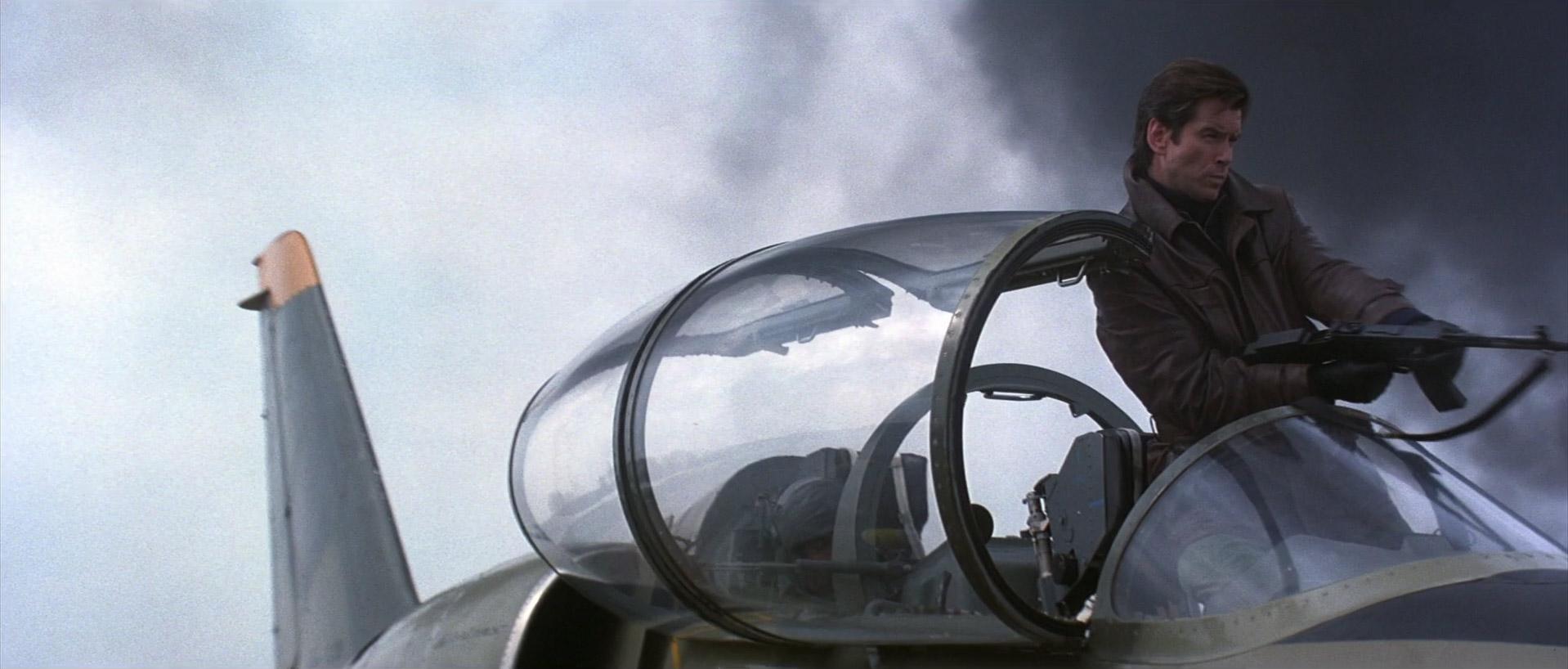
The Cultural Impact and Ethical Questions
The portrayal of nuclear threat in James Bond movies has had a profound cultural impact. It shaped public perception of nuclear weapons, further fueling discussions about their role in international politics and security. The fear of nuclear annihilation and the desire for a heroic figure to protect humanity resonated with audiences during tense periods of the Cold War and beyond.
Moreover, these films raised ethical questions about the development, proliferation, and use of nuclear weapons. The complex character of Robert Oppenheimer, whose work laid the foundation for these weapons, adds another layer of contemplation. As we enjoy the action-packed adventures on screen, we are reminded of the real-world implications of nuclear power and the importance of responsible decision-making.
FAQ
1. What role did nuclear weapons play in James Bond movies during the Cold War era?
During the Cold War era, nuclear weapons played a central and menacing role in James Bond movies. The intense geopolitical rivalry between the United States and the Soviet Union heightened global fears of nuclear annihilation, and this fear was reflected in the films. In movies like “Goldfinger” and “Thunderball,” the villains’ schemes often revolved around obtaining or deploying nuclear weapons to gain power and threaten the world. These plots resonated with audiences who were living in an era where the possibility of nuclear conflict loomed large. James Bond, as a symbol of Western resilience, was portrayed as the heroic agent who consistently thwarted these sinister plots and saved the world from nuclear disaster.
2. How did the portrayal of nuclear threat in James Bond movies evolve over time?
The portrayal of nuclear threat in James Bond movies evolved significantly over time to reflect changing global dynamics. In the early films of the 1960s and 1970s, the nuclear threat was more straightforward, with villains attempting to use nuclear weapons for world domination. As the Cold War tension eased, the focus shifted towards nuclear terrorism and the danger of rogue actors gaining access to nuclear technology. Movies like “Octopussy” and “GoldenEye” explored the threat posed by stolen nuclear weapons and the potential for catastrophic electromagnetic pulse attacks. Furthermore, the ethical implications of nuclear power became more pronounced in later films, mirroring real-world concerns. The evolving portrayal of nuclear threat in James Bond movies serves as a mirror to the shifting geopolitical landscape and societal anxieties surrounding nuclear weapons.
3. Did Robert Oppenheimer regret his role in developing nuclear weapons?
While Robert Oppenheimer was deeply conflicted about his role in developing nuclear weapons, it is essential to understand that his feelings were complex and evolved over time. Initially, Oppenheimer was motivated by scientific curiosity and the desire to contribute to the war effort during World War II. However, witnessing the destructive power of the atomic bomb in the bombings of Hiroshima and Nagasaki left him with a sense of profound moral responsibility. He became an advocate for international control of nuclear weapons and expressed regret for his part in unleashing the atomic age. Oppenheimer’s stance on nuclear weapons evolved further in the post-war years, and he actively opposed the development of the hydrogen bomb, earning him scrutiny during the McCarthy era. Despite facing hardships, Oppenheimer continued to advocate for arms control and peaceful use of atomic energy, reflecting his genuine concerns and regrets about the consequences of nuclear weapons.
4. How did James Bond movies influence public perceptions of nuclear weapons during the Cold War?
James Bond movies played a significant role in shaping public perceptions of nuclear weapons during the Cold War. These films heightened the fear and fascination surrounding nuclear power, as they often depicted a world on the brink of nuclear catastrophe. Audiences were exposed to the potential horrors of nuclear war, and this portrayal further entrenched the idea that nuclear weapons were a grave threat to humanity. The character of James Bond himself became a symbol of hope and resilience, reinforcing the belief that a hero could protect the world from the dangers of nuclear weapons.
5. What are some real-world consequences of nuclear proliferation depicted in James Bond movies?
James Bond movies often explored the consequences of nuclear proliferation, both real and hypothetical. One real-world consequence depicted in the films was the possibility of nuclear terrorism. As the world grappled with the fear of nuclear weapons falling into the wrong hands, Bond’s encounters with rogue actors and criminal organizations highlighted the potential for such catastrophic scenarios. Moreover, the films delved into the geopolitical tensions between nuclear powers, as seen in the Cold War rivalry between the United States and the Soviet Union. The danger of accidental nuclear war and the ethical dilemmas surrounding nuclear deterrence were also subtly addressed in various films.
6. How did the James Bond franchise contribute to discussions about nuclear disarmament?
The James Bond franchise played a role in initiating discussions about nuclear disarmament by using its platform to bring attention to the global issue. Through thrilling storylines, the movies brought the topic of nuclear weapons to the forefront of public consciousness, sparking conversations about the need for arms control and disarmament. Additionally, the character of James Bond himself, with his unwavering commitment to preventing nuclear disasters, served as an embodiment of the call for disarmament. The films subtly advocated for diplomatic efforts to address nuclear proliferation and highlighted the dangers of a world armed with these weapons of mass destruction. While the primary goal of the films was to entertain, their impact on public perceptions and discussions about nuclear disarmament cannot be underestimated.
7. How did the James Bond franchise depict the psychological impact of living under the constant threat of nuclear war?
The James Bond franchise often explored the psychological impact of living under the constant threat of nuclear war. The fear of nuclear annihilation was a pervasive reality during the Cold War era, and this anxiety was skillfully conveyed in the films. Characters depicted the stress and uncertainty of living in a world where nuclear war seemed imminent. The films showcased the toll such a threat took on the mental health of individuals and the overarching feeling of powerlessness in the face of such a devastating force. James Bond himself was not immune to the psychological impact of his high-stakes missions and the constant pressure to prevent nuclear disasters. These portrayals served as a reminder of the human toll of the nuclear threat beyond the action-packed sequences.
8. What are some lesser-known historical references related to nuclear weapons in James Bond movies?
James Bond movies often incorporated lesser-known historical references related to nuclear weapons. For example, in “The World Is Not Enough,” the plot involves a fictional nuclear meltdown at a decommissioned Soviet nuclear facility, which draws inspiration from real incidents of nuclear accidents during the Cold War. The film “Diamonds Are Forever” touched on the controversial topic of nuclear weapons testing, referencing the then-recent protests against nuclear testing in the United States. These historical references provided additional depth and context to the films, allowing audiences to explore the broader implications of nuclear technology beyond the realm of fiction.
9. How did the James Bond franchise address the moral dilemmas of using nuclear weapons in times of crisis?
The James Bond franchise addressed the moral dilemmas of using nuclear weapons in times of crisis by presenting nuanced situations where such choices had to be made. The films explored the concept of the lesser evil, where using nuclear weapons might be seen as the only option to prevent a more significant catastrophe. However, they also portrayed the devastating consequences of such decisions, emphasizing the moral complexities involved. James Bond’s character often found himself grappling with the ethical implications of his actions and the potential loss of innocent lives. These portrayals served as a reminder that the use of nuclear weapons should never be taken lightly and underscored the importance of seeking peaceful resolutions to conflicts.
10. What influence did the James Bond franchise have on the public’s perception of nuclear scientists and physicists?
The James Bond franchise influenced the public’s perception of nuclear scientists and physicists by portraying them as both brilliant and morally complex individuals. Characters like the iconic Bond villain Ernst Stavro Blofeld, a physicist who schemes for global domination, and Dr. Julius No, a nuclear scientist turned criminal mastermind, contributed to the notion that scientists could be driven to misuse their knowledge for sinister purposes. On the other hand, the portrayal of Robert Oppenheimer as a conflicted and regretful scientist in the context of nuclear weapons development highlighted the moral dilemmas faced by scientists during the atomic age. While the films showcased the intelligence and expertise of nuclear scientists, they also cautioned against the potential abuse of scientific knowledge for destructive ends, encouraging a more nuanced perception of these professionals in the eyes of the public.
Conclusion:
The portrayal of nuclear threat in James Bond movies is a testament to the enduring fascination with the dangers and mysteries of the atomic age. Through the captivating adventures of James Bond, these films have engaged audiences while raising critical questions about the responsible use of nuclear power and the pursuit of disarmament. Moreover, the character of Robert Oppenheimer serves as a poignant reminder of the profound impact that scientific discoveries can have on the course of history and the ethical responsibilities that accompany such knowledge. As we continue to enjoy the action-packed thrills of the James Bond franchise, let us also reflect on the real-world implications of nuclear weapons and the importance of striving for a world free from the specter of nuclear threat.






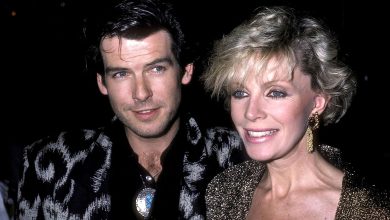




5 Comments